UK meteorite search reconnaissance mission in Antarctica 2018/2019 – 36 meteorites found
Last update: 10 May 2022
On a blue icefield meteorite search reconnaissance mission members of the UK Polar Meteorite Exploration and Research team consisting of Katherine (Katie) Joy and field guide Julie Baum have found 36 meteorites (~2 mm to 20 cm in size) during their search on two icefields (Outer Recovery and Omega Nuna-tak icefields) in the Recovery Glacier region (81°10′S, 28°00′W) on the southern side of the Shackleton Range as well as the northern areas of Argentina Range (82°18’27.2″S, 41°53’30.3″W) in Antarctica since 2 January 2019. The reconnaissance mission (Dec 2018 – Feb 2019) is one of two simultaneous field trips meant as a preparation for the Lost Meteorites of Antarctica Project‘s main field trip which is planned for December 2019. The first meteorite was found on 6 January 2019. By 8 January three meteorites had been found. On 9 January another four meteorites were found. The following day another four meteorites were discovered. Together with the eight meteorites found on 11 January (including an anomalous CM chondrite and a Mesosiderite (B) ) and the two meteorites found on 12 January, including a specimen with a length of 19 centimeters, a total of 21 meteorites was found in the first search area. After moving to another search area the team found a specimen on a nunatak on 16 January. The following day five specimens were found and on 18 January another two meteorites could be recovered. On 19 January three meteorites were detected of which two were still half embedded in the ice and had to be dug out. On 20 January one meteorite was found and on the following day another one, which could be an achondrite because of its shiny, glassy fusion crust and apparent lack of chondrules. On 23 January another meteorite, half buried in ice, was found. Together with two small specimens found on 24 January 36 meteorites have been found so far. The meteorites are expected to arrive in Britain in June 2019. The amount and classes of the surface finds of this year’s search season will be compared to the possible subsurface finds of iron meteorites during the December 2019 seach expedition. It is assumed that up to 2.9 iron meteorites per week might be found if the team manages to scan an area of about 2.4 km² per day with the five panels of their metal detector array towed by snowmobile. The Lost Meteorites of Antarctica Project tries to confirm the theory of a hidden layer of subsurface Antarctic meteorites, published by Evatt et al in February 2016. The first Outer Recovery Icefields and Hutchison Icefield meteorites were officially registered in the Meteoritical Bulletin database on 6 May 2021.
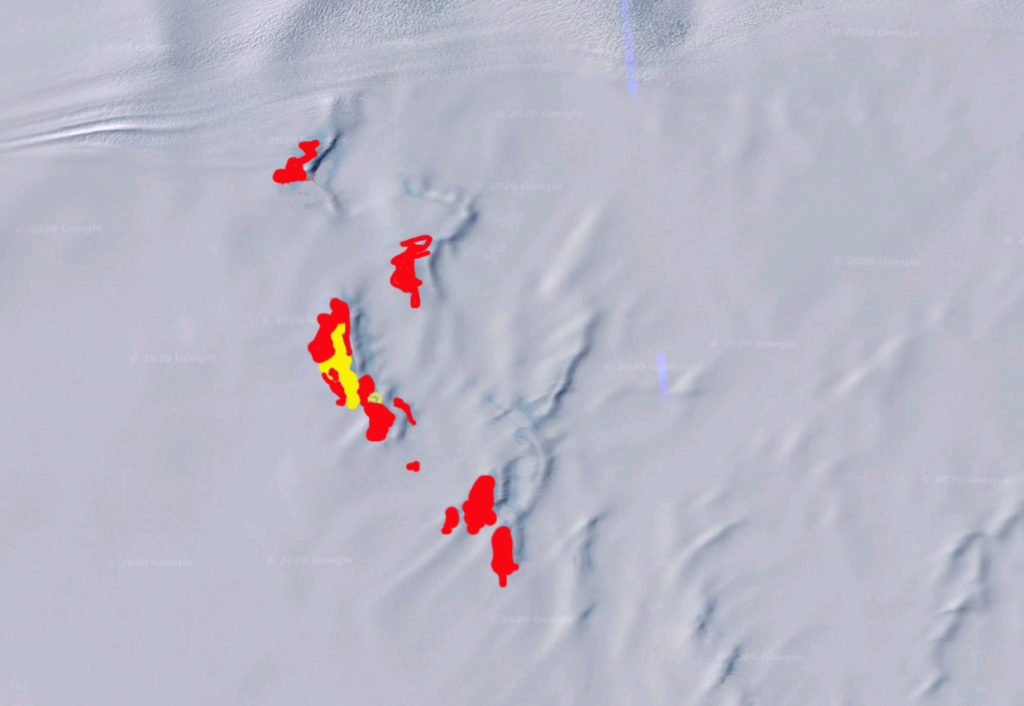
A systematic panel array search for subsurface iron meteorites was done in the yellow area, around location 81°29’49.0″S 17°57’08.3″W. The skidoo search for surface meteorites was primarily performed in the red areas. 107 surface specimens were found on four icefields during the 2018/19 and 2019/20 search campaigns to the Outer Recovery Icefields.
A potential hidden layer of meteorites below the ice surface of Antarctica
G. W. Evatt, M. J. Coughlan, K. H. Joy, A. R. D. Smedley, P. J. Connolly, I. D. Abrahams
Nature Communications 7,
Article number: 10679, published 16 February 2016
The Lost Meteorites of Antarctica Project: A New UK-Led Antarctic Meteorite Recovery Programme
K. H. Joy, G. E. Evatt, A. R. D. Smedley, I. D. Abrahams, A. Peyton, L. A. Marsh, J. Wilson, J. Davidson, W. van Verre, M. Rose, L. Gerrish, T. Harvey
50th Lunar and Planetary Science Conference (2019), Abstract #1018
Classified meteorite specimens (2018-2019)
Hutchison icefields (HUT)
HUT 18022 (L5, 82.94 g)
HUT 18025 (H6, 0.33 g)
HUT 18026 (L6, 6.3g)
HUT 18027 (H6, 0.79 g)
HUT 18028 (H6, 0.84 g)
HUT 18029 (LL6, 810.89 g)
HUT 18030 (L4, 33.9 g)
HUT 18032 (H6, 228 g)
HUT 18033 (L6, 49 g)
HUT 18036 (H6, 306 g)
HUT 18038 (L6, 1.03 g)
Outer Recovery (OUT) icefields
OUT 18002 (H6, 21.09 g)
OUT 18004 (L5, 24.34 g)
OUT 18005 (H4, 8.7 g)
OUT 18006 (H6, 2.06 g)
OUT 18007 (L6, 29.63 g)
OUT 18008 (H6, 2.37 g)
OUT 18009 (H5, 330 g)
OUT 18010 (L6, 303.73 g)
OUT 18011 (H6, 406 g)
OUT 18012 (CM-anom, 13.99 g)
OUT 18014 (Mesosiderite (B), 760.83 g)
OUT 18015 (H6, 850.92 g)
OUT 18016 (L3, 9.5 g)
OUT 18018 (Mesosiderite (B), 153.4 g)
OUT 18019 (H5, 12.8 g)
OUT 18020 (H6, 4.52 g)
OUT 18021 (L6, 2460 g)
OUT 18034 (Aubrite, 0.81 g)
OUT 18035 (Eucrite, 1.66 g)


First find on blue ice on 6 January. Photo: Katherine Joy

OUT 18011 (H6, 406 g, 9 × 6 × 4 cm) in situ on blue ice at an altitude of 1443 metres at location 81°30.50483’S, 17°53.65900’W on 9 January 2019. Photo: Katherine Joy

The 95% black fusion crusted OUT 18011 (H6, 406 g, 9 × 6 × 4 cm) in situ on blue ice at an altitude of 1443 metres at location 81°30.50483’S, 17°53.65900’W on 9 January 2019. Photo: Katherine Joy

Outer Recovery Icefields 18012 (CM-anom, 13.99 g, 4 × 3 × 3 cm) in situ at location 81°29.97950’S, 17°59.13600’W on 11 January 2019. Photo: Jane MacArthur



Elongated 19-cm-long 2.46-kilogram Outer Recovery Icefields 18021 specimen (the ‘melon’) on blue ice, found towards the edge of the ice field at the end of the search day on 12 January. The biggest find of the search campaign. Photo: Katherine Joy
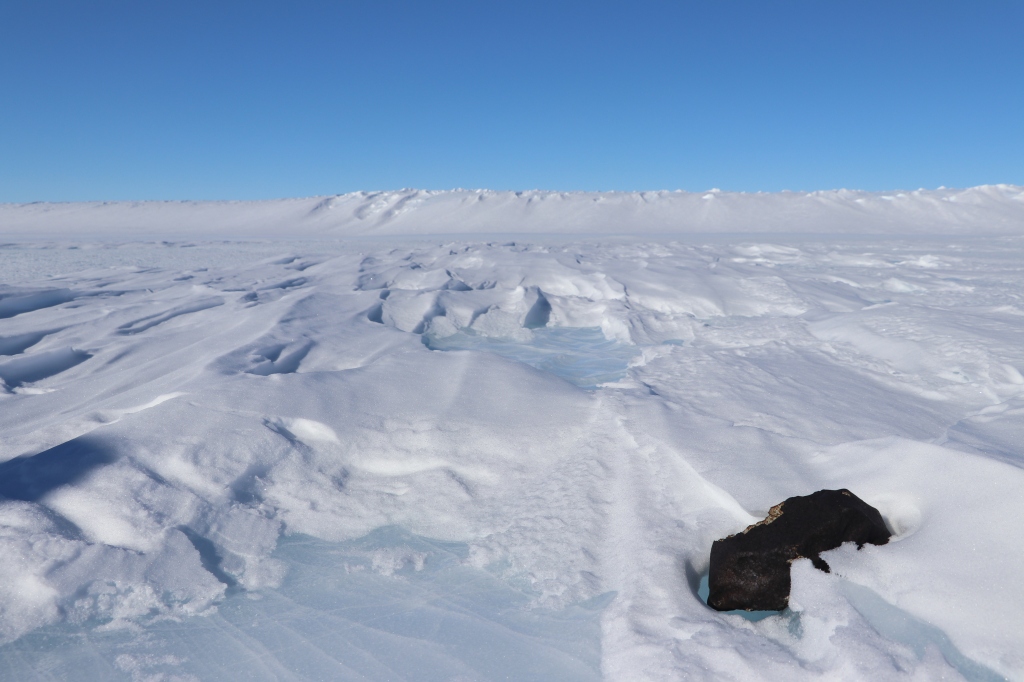
Elongated 19-cm-long 2.46-kilogram Outer Recovery Icefields 18021 specimen (the ‘melon’) on blue ice, found towards the edge of the ice field at the end of the search day on 12 January. The biggest find of the search campaign. Photo: Katherine Joy

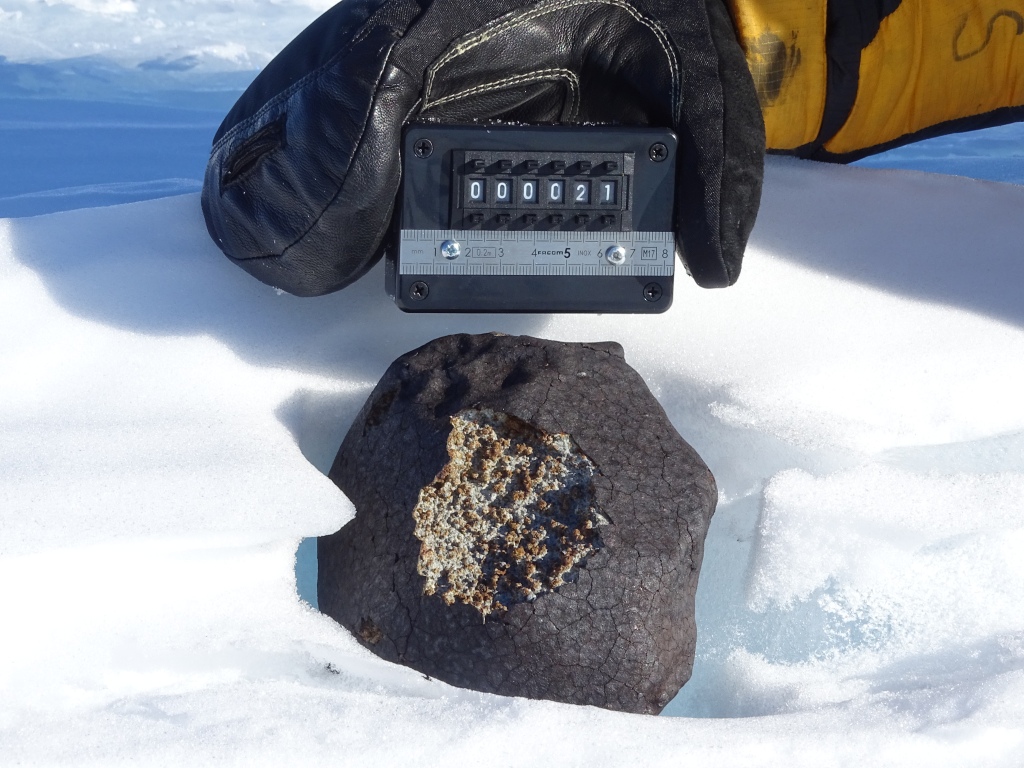
The 2.46-kilogram Outer Recovery Icefields 18021 specimen (19 cm x 12 cm x 10 cm) with 75% fusion crust in situ. Photo: Lost Meteorites of Antarctica, The University of Manchester
Outer Recovery Icefields 18021 in situ. Video: Katherine Joy, The University of Manchester

The 2.46-kilogram Outer Recovery Icefields 18021 specimen after it has been thawed in an exsiccator under vacuum. Photo: Katherine Joy

Hutchison Icefield 18022 (82.94 g, 7 cm x 5 cm x 4 cm), a serendipitous find on Turner nunatak on 12 January. Photo: Katherine Joy

Hutchison Icefield 18022 (82.94 g, 7 cm x 5 cm x 4 cm) found on a nunatak on 12 January. Photo: Katherine Joy

HUT 18029 (810.9 g, 13 cm x 12 cm x 8 cm) in situ. Video: Katherine Joy, The University of Manchester


Source: UK Polar Meteorite Exploration and Research
Outer Recovery Icefields meteorites
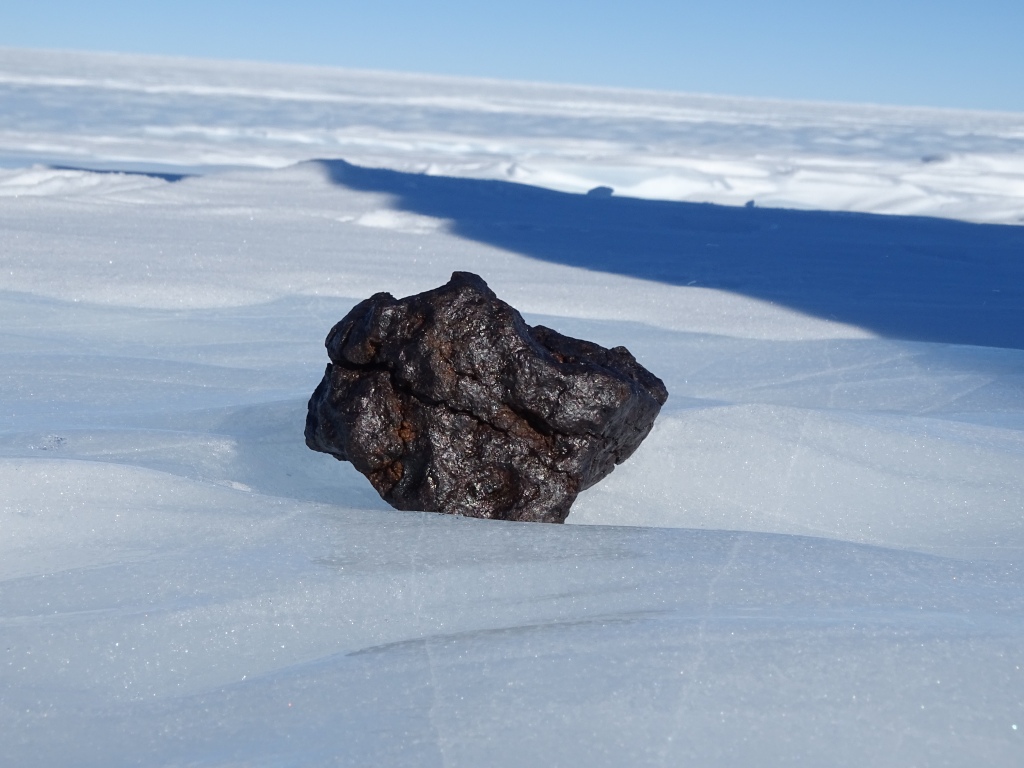
The larger 527-gram mass (12 cm x 10 cm x 8 cm) of Mesosiderite (B) Outer Recovery Icefields 18014 found on 11 January. This Mesosiderite (two masses found 5 metres away from each other) is possibly paired with Outer Recovery Icefields 18018, which was found 1.73 kilometres away. Photo: Lost Meteorites of Antarctica / The University of Manchester
Collecting OUT 18014 at the Outer Recovery Icefields. Video: Katherine Joy / Lost Meteorites of Antarctica
3-D photogrammetry model of the smaller 233-gram mass (8 cm x 6 cm x 5 cm) of OUT 18014. Video: Thomas Harvey / Lost Meteorites of Antarctica / The University of Manchester
3-D photogrammetry model of the 153-gram mass (7 cm × 5 cm × 4 cm) of OUT 18018. Video: Thomas Harvey / Lost Meteorites of Antarctica / The University of Manchester
Outer Recovery Icefields 18007 (L3, 29.63 g, 3.5 cm x 3 cm x 2 cm)
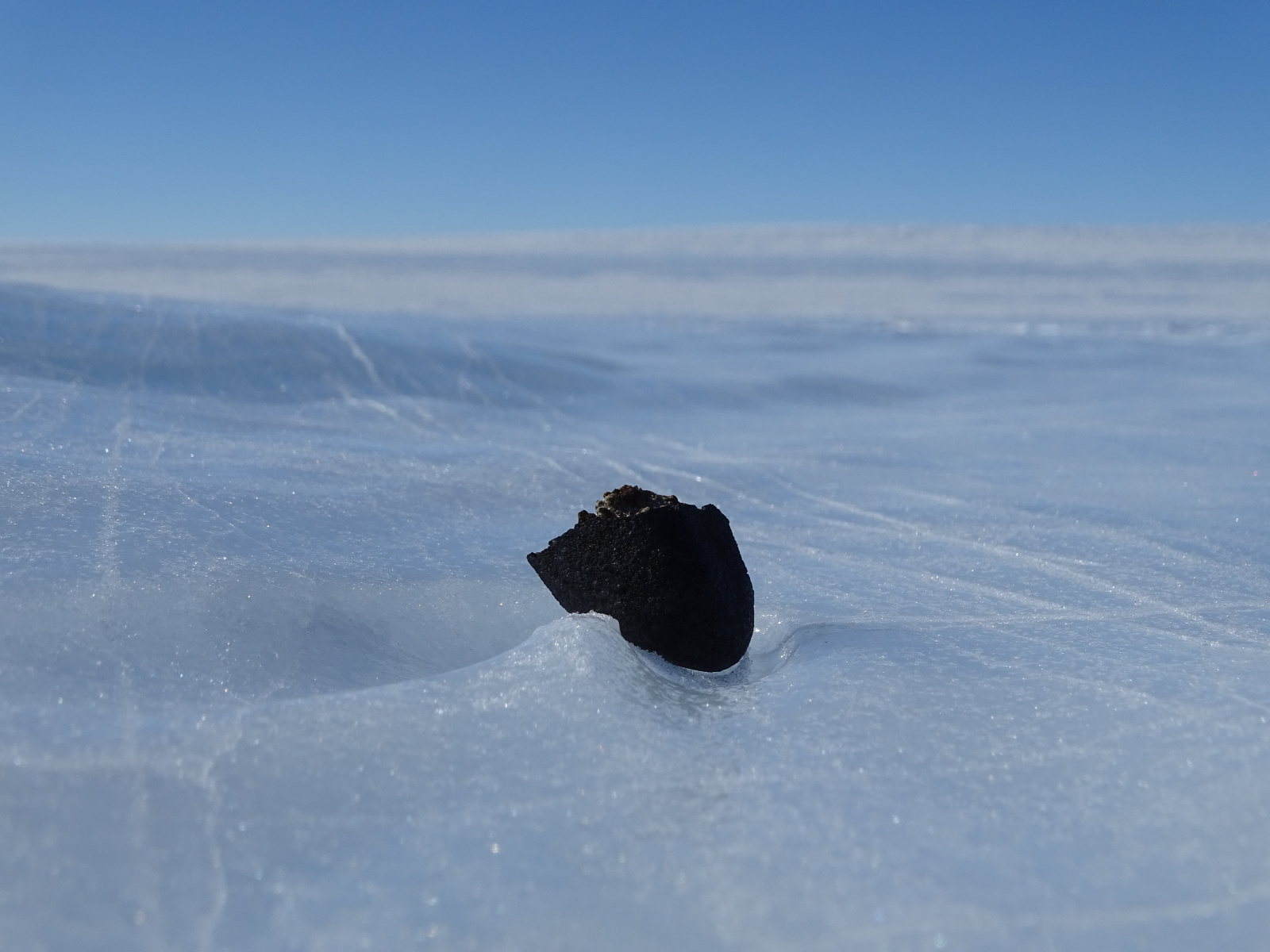
Outer Recovery Icefields 18016 (L3, 9.5 g, 3 cm x 2 cm x 2 cm)
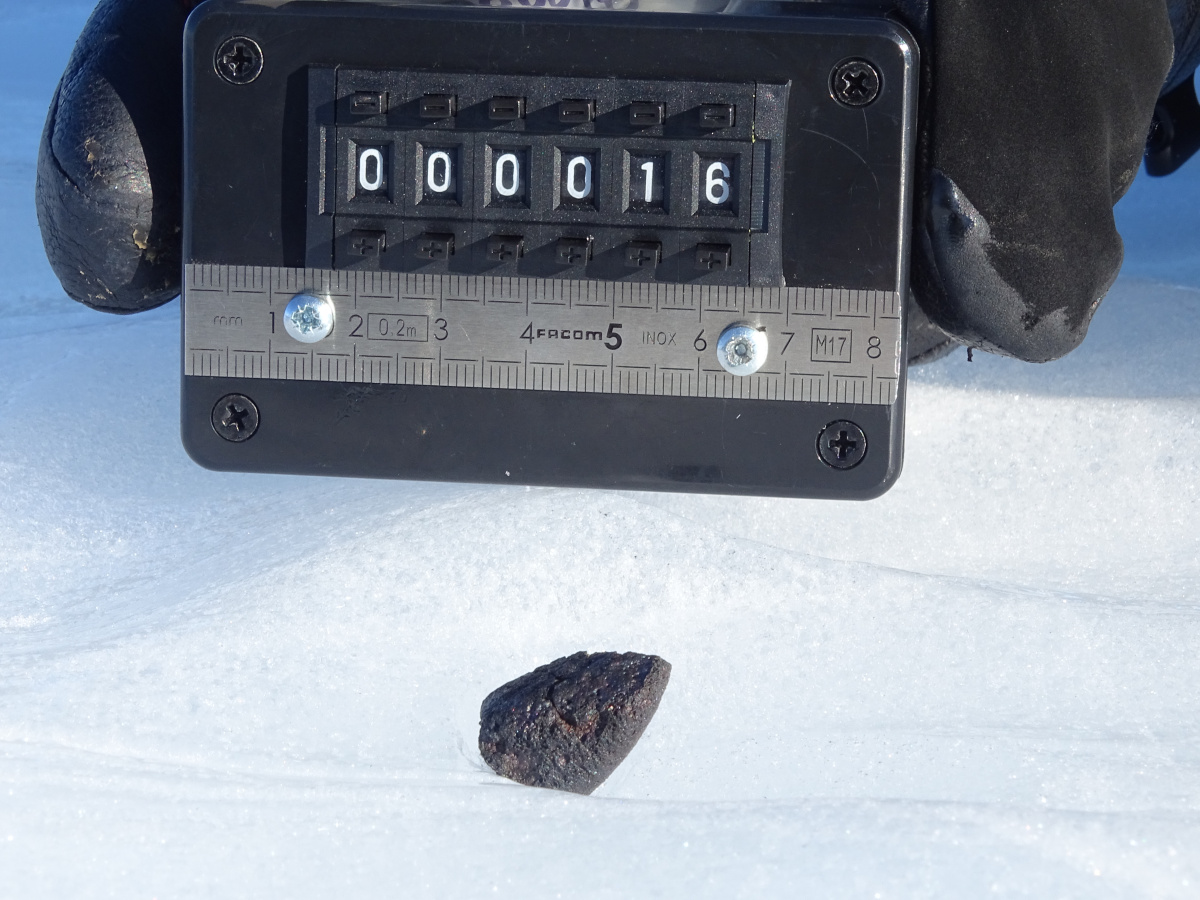
Outer Recovery Icefields 18020 (H6, 4.52 g, 3 cm x 1.5 cm x 1 cm)

Outer Recovery Icefields 18010 (L6, 303.73 g, 10 cm x 8 cm x 4 cm)
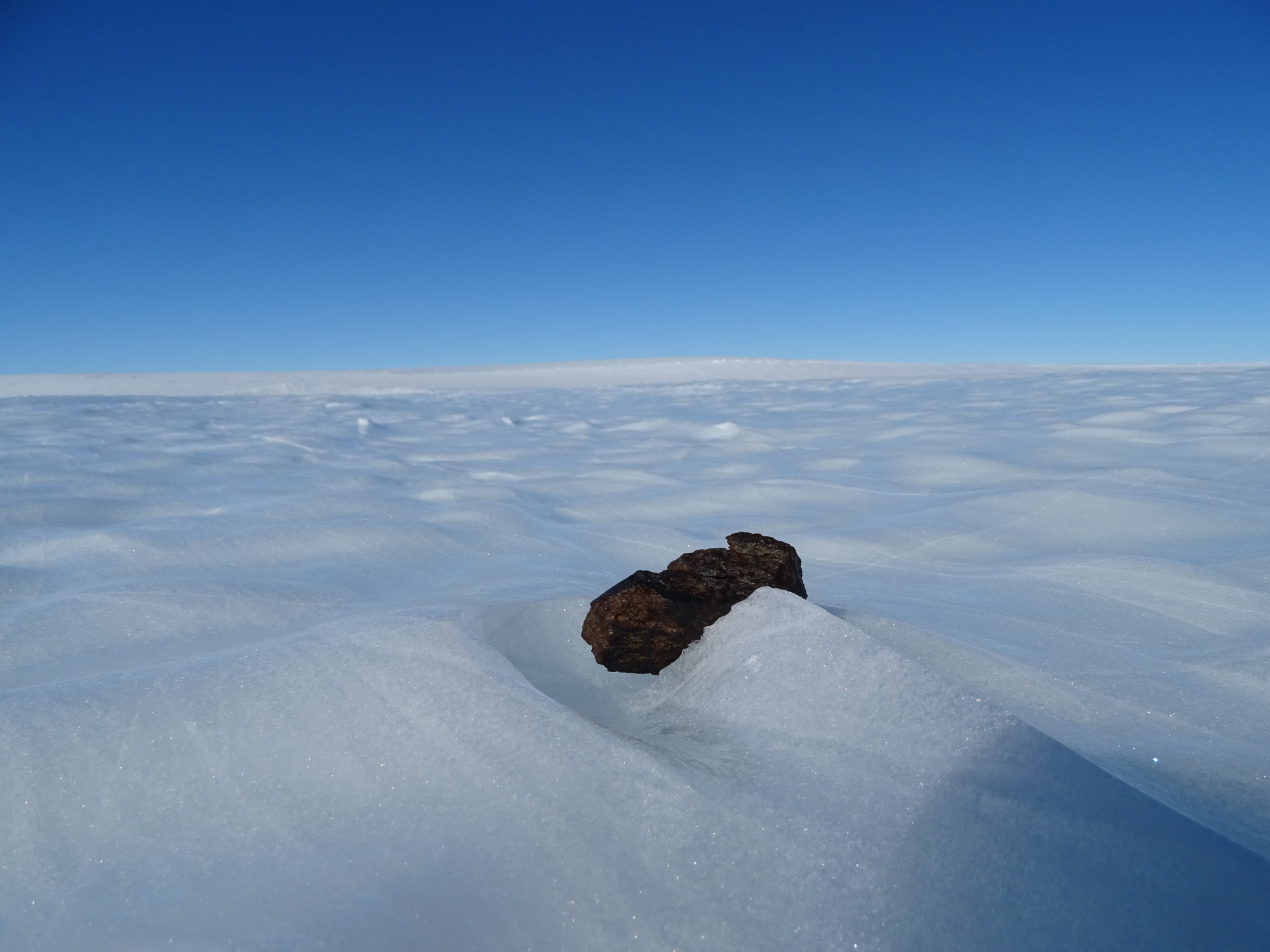
Outer Recovery Icefields 18021 (L6, 2.46 kg, 19 cm x 12 cm x 10 cm)
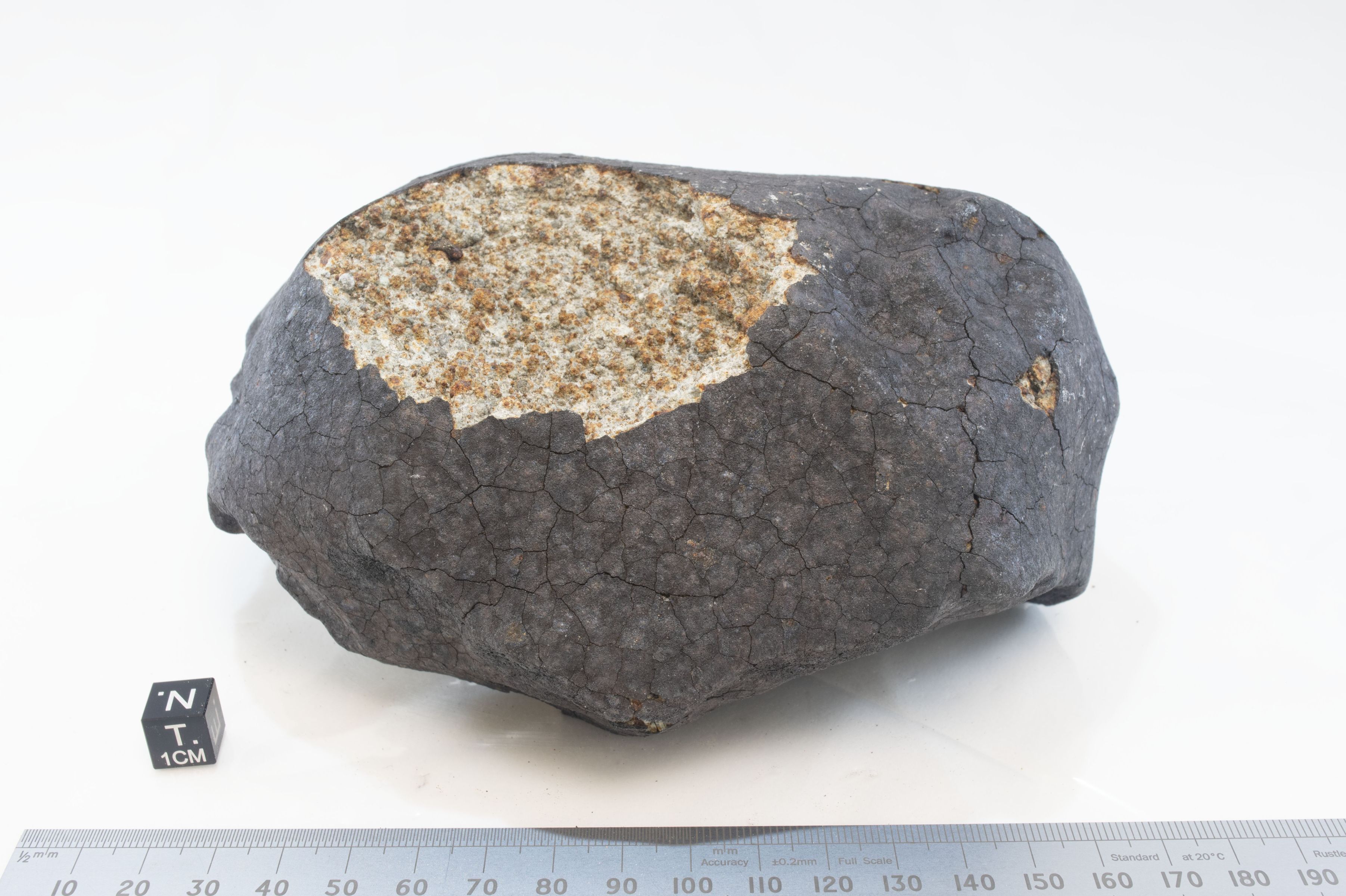
Outer Recovery Icefields 18015 (H6, 851 g, 15 cm x 12 cm x 6 cm)
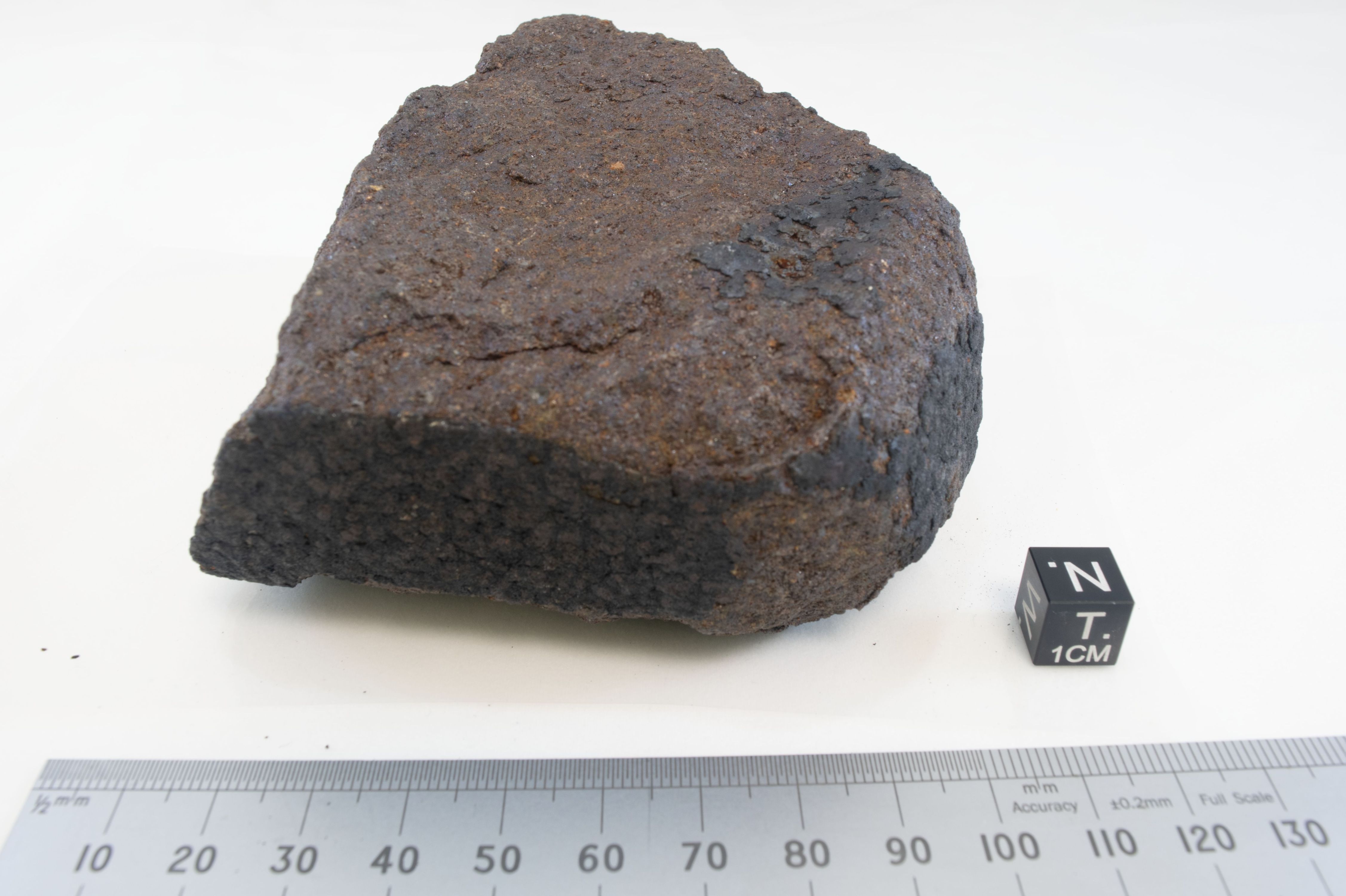
3-D model of OUT 18015 meteorite produced by photogrammetry. Video: Thomas Harvey, Lost Meteorites of Antarctica, The University of Manchester
Outer Recovery Icefields 18002 (H6, 21.09 g, 2 cm x 2 cm x 2 cm)

Hutchison Icefield meteorites
Hutchison Icefield 18022 (L5, 82.94 g, 7 cm x 5 cm x 4 cm)

Hutchison Icefield 18029 (LL6, 810.9 g, 13 cm x 12 cm x 8 cm)
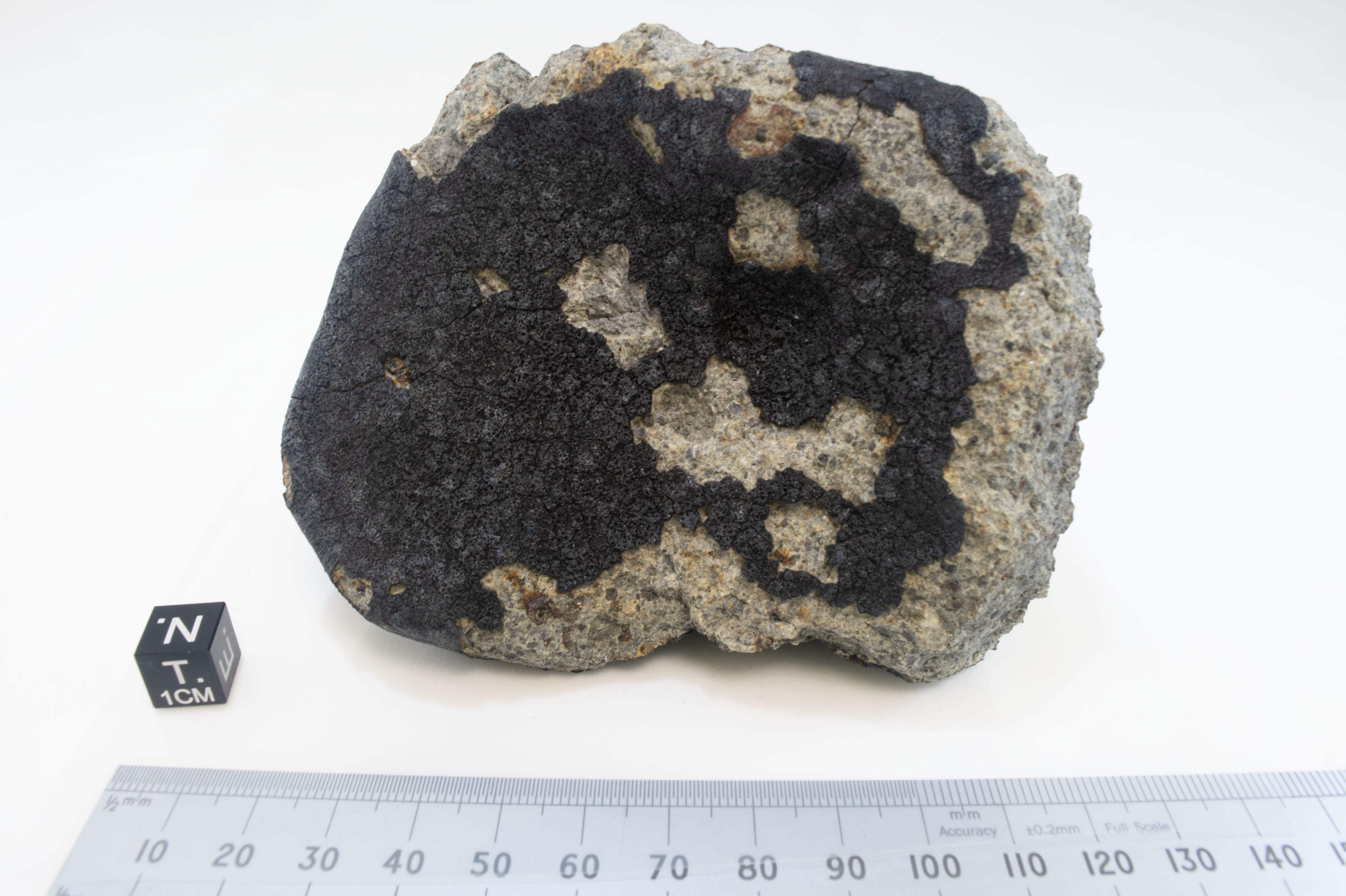
360-degree video of Dr Katherine Joy and field guide Julie Baum finding a meteorite. Videos: Katherine Joy (29 March 2021)
Dr Katherine Joy and Julie Baum searching for meteorites at Hutchison Icefields (the rocky hillside in the background is Turner Nunatak)
Media coverage
Interview with Katherine Joy and Geoff Evatt (BBC, 27 February 2019)
































